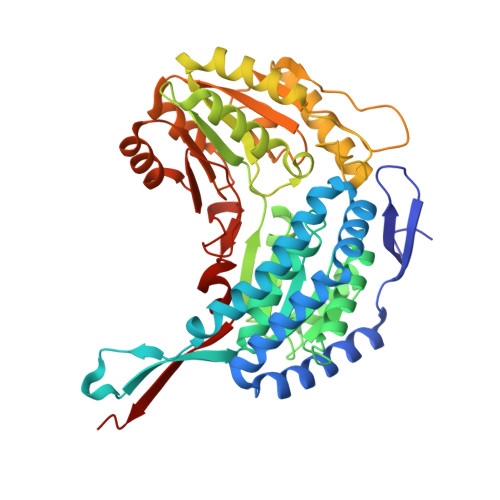Adaptive laboratory evolution recruits the promiscuity of succinate semialdehyde dehydrogenase to repair different metabolic deficiencies.
He, H., Gomez-Coronado, P.A., Zarzycki, J., Barthel, S., Kahnt, J., Claus, P., Klein, M., Klose, M., de Crecy-Lagard, V., Schindler, D., Paczia, N., Glatter, T., Erb, T.J.(2024) Nat Commun 15: 8898-8898
- PubMed: 39406738
- DOI: https://doi.org/10.1038/s41467-024-53156-x
- Primary Citation of Related Structures:
8QMQ, 8QMR, 8QMS, 8QMT - PubMed Abstract:
Promiscuous enzymes often serve as the starting point for the evolution of novel functions. Yet, the extent to which the promiscuity of an individual enzyme can be harnessed several times independently for different purposes during evolution is poorly reported. Here, we present a case study illustrating how NAD(P) + -dependent succinate semialdehyde dehydrogenase of Escherichia coli (Sad) is independently recruited through various evolutionary mechanisms for distinct metabolic demands, in particular vitamin biosynthesis and central carbon metabolism. Using adaptive laboratory evolution (ALE), we show that Sad can substitute for the roles of erythrose 4-phosphate dehydrogenase in pyridoxal 5'-phosphate (PLP) biosynthesis and glyceraldehyde 3-phosphate dehydrogenase in glycolysis. To recruit Sad for PLP biosynthesis and glycolysis, ALE employs various mechanisms, including active site mutation, copy number amplification, and (de)regulation of gene expression. Our study traces down these different evolutionary trajectories, reports on the surprising active site plasticity of Sad, identifies regulatory links in amino acid metabolism, and highlights the potential of an ordinary enzyme as innovation reservoir for evolution.
Organizational Affiliation:
Department of Biochemistry and Synthetic Metabolism, Max Planck Institute for Terrestrial Microbiology, Marburg, Germany. hai.he@mpi-marburg.mpg.de.















